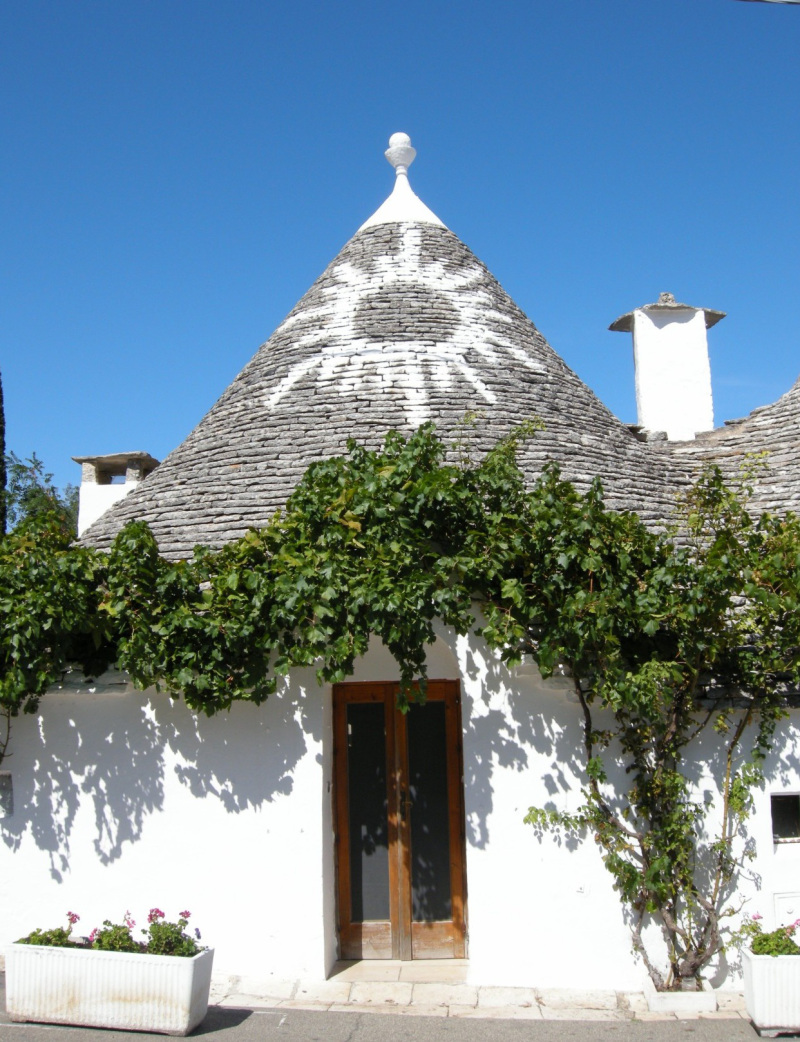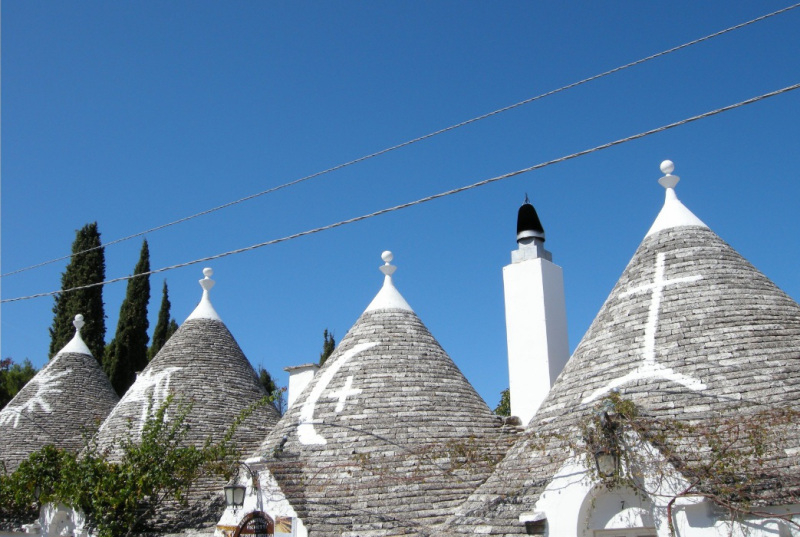 Submitted by Glorious Bastard on
Submitted by Glorious Bastard on

The little town of Alberobello, Italy has the largest concentration of the structures known as trulli, whose origin is shrouded in mystery.
From the small one-room cowshed to a whole complex of dwellings, sometimes of two or three levels, the most notable element of this architecture is the conical roof, which gives the trulli their name. In the singular form ot trullo, this Italian word was probably derived form the Latin turris, meaning "tower. " The origin of these unique trulli is hotly disputed. Suggestions that the roofs were derived from Mycenean or Etruscan tomb designs have never gained much credence, but it is generally agreed that the distinctive form must have been brought by an early wave migration from a Levantine or African country.

There is another very special thing about the trullis, which is that the people who live in them often paint a white symbol on the conical towers. These symbols in themselves represent one of the most intriguing aspects of folklore and the strange fact that NOBDY has been able to offer a satisfactory explanation as to when and why the local inhabitants began to so decorate their homes.
As we might expect from a counrty steeped in the traditions of the Western Church, the majority of the symbols that appear on the trulli are Christian. By far the most frequently used is that of the simple cross, but there are many variations of cross forms. Were the symbols merely Christian, it is unlikely they would have attracted much attention. However, some of the symbols are distinctly un-Christian, and are derived from a wide variety of sources including astrology, the qabalah and alchemy. Such symbols have excited the interest of schloars, but have also given rise to some rather far fetche theories as to the intentions of the pesant farmers who probably originated the custom of decorating the towers.

Some of the tulli symbols
The earliest mention of the symbols seems to be the 17th century, and records show that they were generally restricted to the area of Puglia. A few scholars have argued that the practice of trulli painting started only in the 20th century; but there are photographs of the 1890s in existence that show trulli painted with symbols.The age of the symbols themselves has been much debated, without conclusion. Some say they originate from the Christian era; others believe they originated in the 15th and 16th centuries, even though some borrowing from earlier periods would naturally have taken place.
SOURCE: Secret of the Stone Towers,Mysteries of Mind, Space and Time, Vol. 24, pages 2901-2902
Author: Frederick Goodman




- 3193 reads